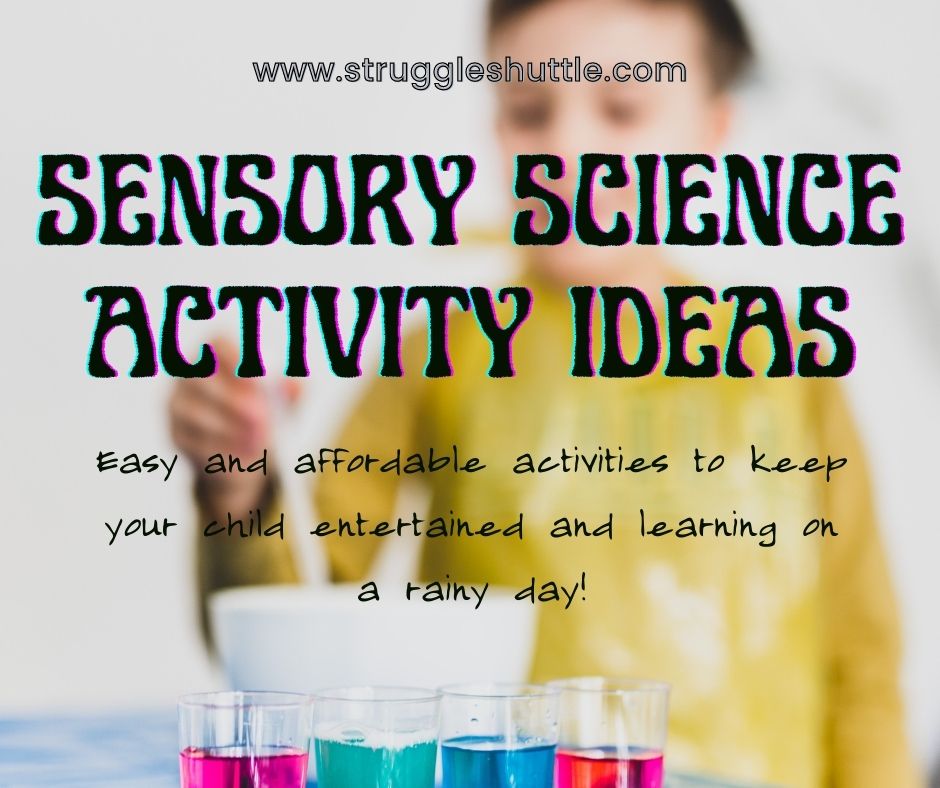
Sensory Science Activity Ideas for Rainy Days
You’ve probably heard of sensory activities and you’ve probably done several science projects before as well. However, have you ever mixed the two to create multi-educational sensory science activities??? If you’ve read my article, Parent Child Activities | 8 Efficiency Activities for Kids, then you know that I am all about multi-functional activities! Sensory science activities are just that! And as a SAHM I am always looking for educational activities for my kids to do even on rainy days!
So what are sensory science activities and why are they beneficial for children?
Let’s start with sensory play.
What is sensory play/ sensory activities?
Sensory play includes activities that stimulate your 5 senses: touch, sight, taste, sound, smell. It also includes activities that involve movement and/ balance. Examples of sensory play include: crinkling paper, bubbles, playing in sand, Play Doh, water play, finger painting, etc…
Why is sensory play beneficial?
Sensory play is most important for children between birth and early childhood. This is because this is the time that they are first encountering most of “their world”. A lot of information is passing through their brains at this time and they are trying to figure out how to process it all. Sensory activities allow children to learn and explore through their senses in a controlled setting. By doing these activities, they are learning to assess which sensory information is useful and which information can be filtered out. Thus, practicing sensory play reduces sensory overload/anxiety.
Other benefits of sensory play include:
- promoting language development
- promoting fine motor skills
- building nerve connections in the brain
- promoting exploration, investigation, and invention
- encouraging practice of the scientific method (observing, hypothesizing, experimenting, and making conclusions)
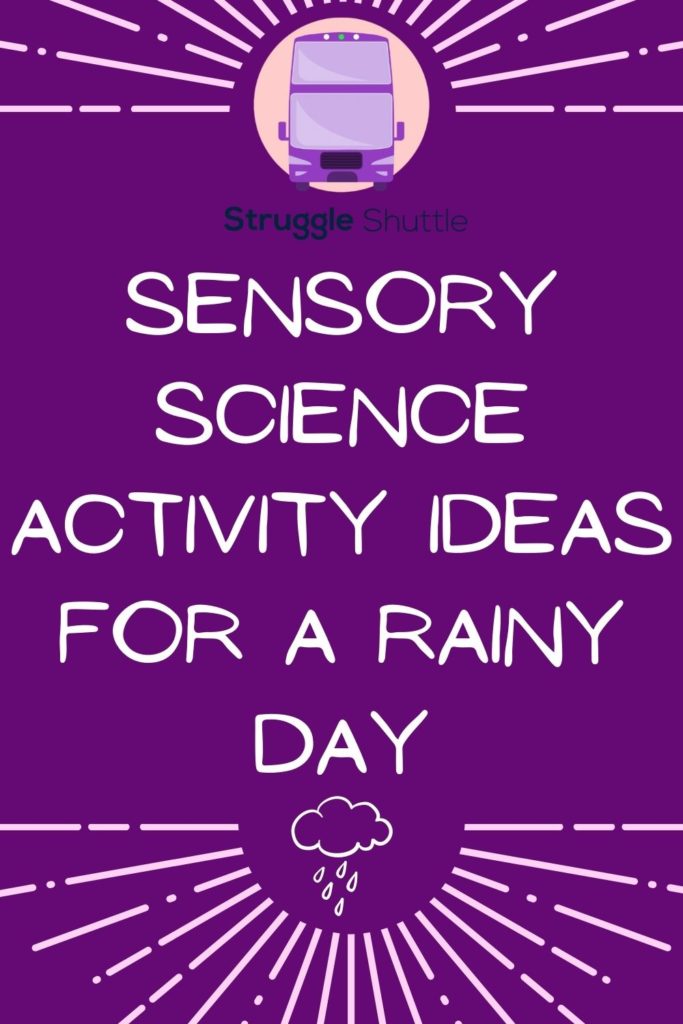
Sensory + Science
It is a natural desire, especially for children, to understand the world around them. Obviously sensory play already encourages children to start thinking more scientifically about sensory information. However, taking these activities one step further to include science experiments enhances the benefits of each activity.
What are the benefits to starting science education early?
The desire to explore, learn and understand the world around you starts at birth. For example, seeing a baby staring at something for a long period of time. This baby is trying to understand what they are observing. You will also see this scientific interest with toddlers through their questions of why? and how?
Through providing science based activities early on in a child’s life you are allowing the child to learn and develop knowledge at a quicker rate. The earlier you start introducing science based concepts/terminology/experiments/activities, the more likely your child will develop skills to succeed in science later on in life.
STEM education (science, technology, engineering, math) has become more and more popular in recent years because of benefits. Introducing and encouraging these concepts earlier sets children on a path to success by instilling abilities to:
- practice creativity, ingenuity, and experimentation
- build resilience by learning that it is okay to fail and try again
- work as a team
- problem solve
- apply relevant knowledge to new activities and adapt
Benefits of sensory science activities
The benefits of sensory science activities thus include both the benefits of sensory play as well as science based activities. As a mom I love the combination activities for the educational benefit and my children love them because they are a little more challenging, take more time to complete and they are FUN! That’s why these activities have recently become my go-to choice for indoor fun on rainy days!
Top 8 sensory science activity ideas for rainy days:
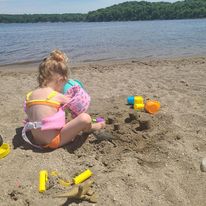
#1 Sand and pennies activity:
What you need:
- Play sand
- Old pennies
- Ketchup
- Small pool/water table/box
- Paper Towels
- OPTIONAL: shovel and strainer**
How to play:
- Fill a water table/ baby pool with sand.
- Hide multiple pennies in the sand.
- OPTIONAL: wet the sand**
- Have child search for the pennies (with hands/use shovel and strainer)
- Use the ketchup to clean the pennies until they shine like new
- Wipe remaining ketchup from hands and pennies with paper towels
Sensory activities included:
- Touch: sand and ketchup texture
- Movement: fine motor skills handling pennies &/ shovel
- Sight: dull to shiny pennies
Science activities include:
- Exploration: finding pennies
- Hypothesizing: what will happen to the penny in the ketchup?
- Observation: watching what happens to the penny
- Experimenting: doing it again
- Concluding: ketchup+ dirty penny=clean penny
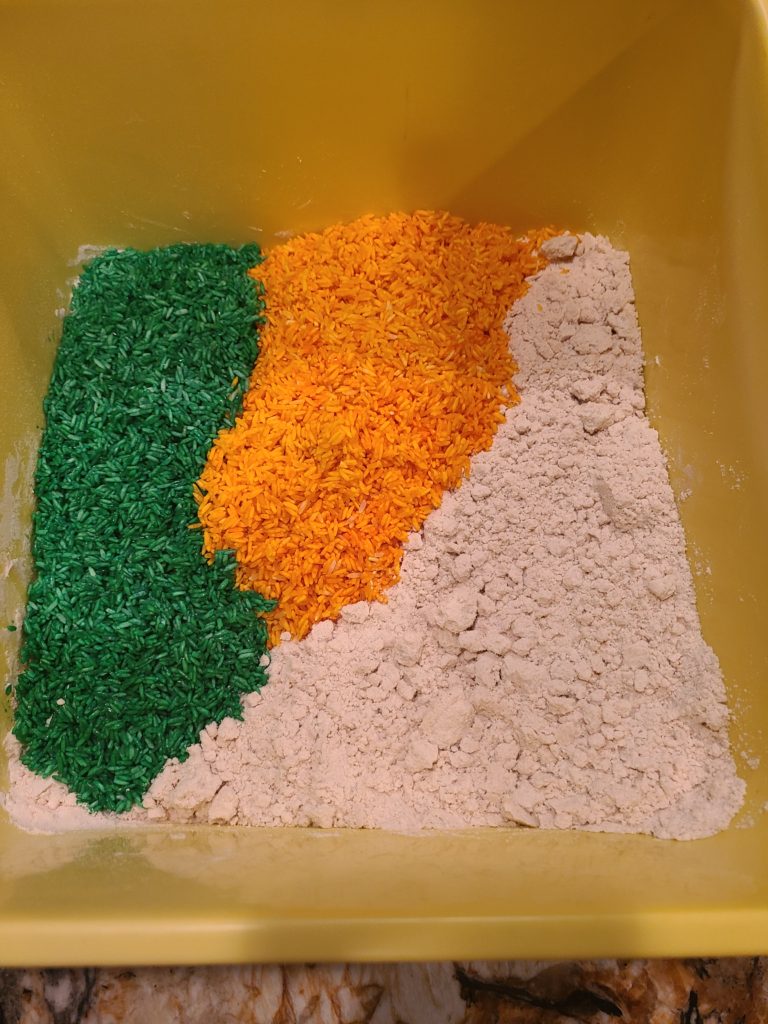
#2 Sensory box:
What you need:
- Flour
- Oil (baby or vegetable)
- Dry white rice
- White Vinegar
- Food Coloring
- Ziploc Bag
- Paper Towels
- Box
- Small toys/cups
How to play:
- Make homemade sand with your child: Mix in ratios of 8 cups of flour with 1 cup of oil.
- Make colored rice with your child: In a Ziploc bag, mix in ratios of 1 cup rice to 1 tsp vinegar and add as much food coloring as desired. Shake vigorously until color is uniform. Spread out rice on paper towels and allow to dry.
- Add rice and sand to a box/container.
- Allow child to play with hands &/ small toys/cups.
Sensory activities included:
- Touch: feel of the sand and rice textures
- Sight: color of rice
- Smell: vinegar and oil
- Movement: fine motor skills playing with small toys and sand/rice
Science activities included:
- Texture transformation: turning oil and flour into sand
- Dye observation: turning white rice to color of choice
- Measurements/counting: mixing the flour and oil and making the dyed rice / playing and filling cups of sand and rice
- Engineering: building sand castles/other creations
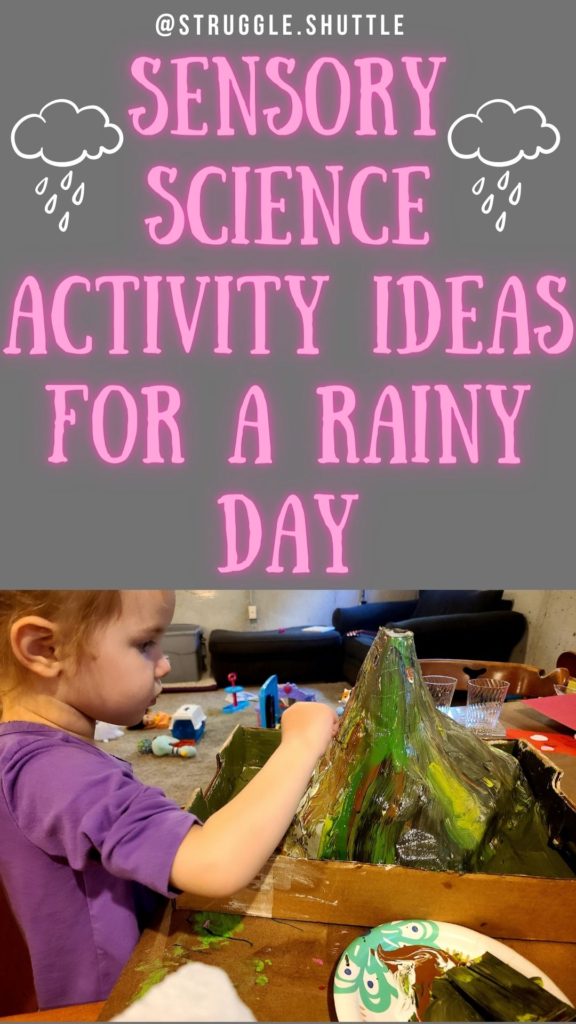
#3 Volcano:
What you need:
- Cardboard/plastic tray with small lip
- Empty bottle
- Paper (newspaper/scrap paper)
- Tape
- Glue/flour/art paste
- Paint (optional)
- White vinegar
- Baking soda
- Dish soap
- Food coloring
How to play:
- Glue empty bottle to middle of cardboard base.
- Crumble up paper/bags and place around bottle to shape volcano.
- Tape to secure.
- Use art paste or create a paste with: 1. flour and water until it looks like the consistency of a thin glue 2. Glue and a small amount of water to thin
- Tear newspaper/scrap paper into strips.
- Dip paper strips into paste.
- Cover volcano with paper Mache strips.
- Allow to dry.
- Paint volcano (optional) and allow to dry.
- Add 2 tbsp baking soda, 1 tsp dish soap, and a couple drops of food coloring to bottle. When ready to erupt, pour in 1 oz vinegar. **increase ratio for bigger eruption/ larger bottle
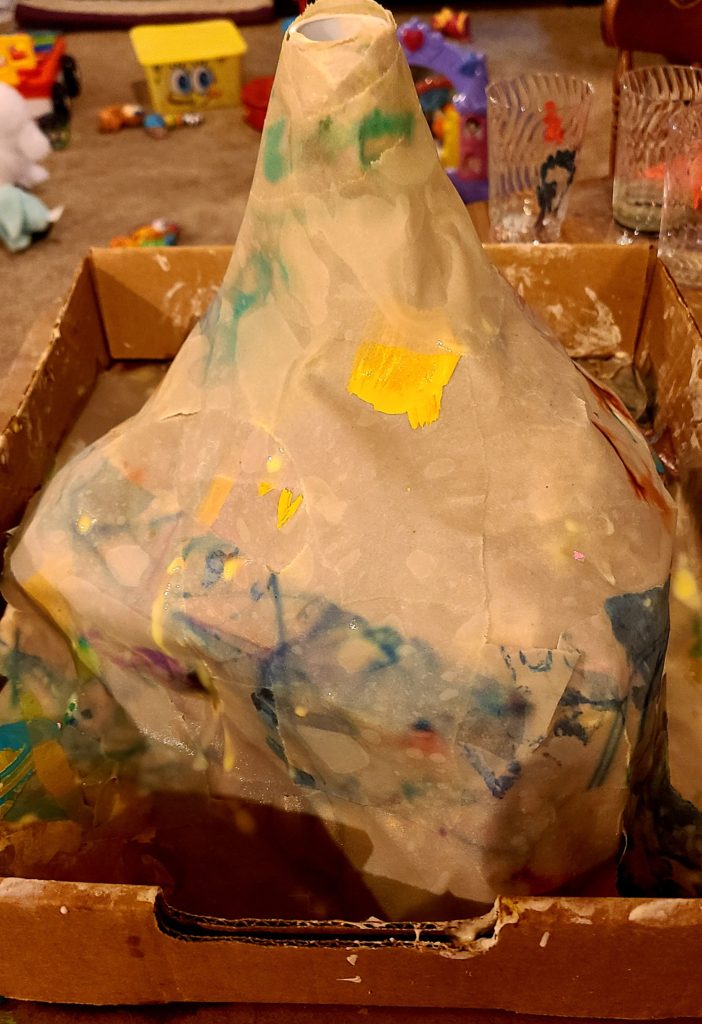
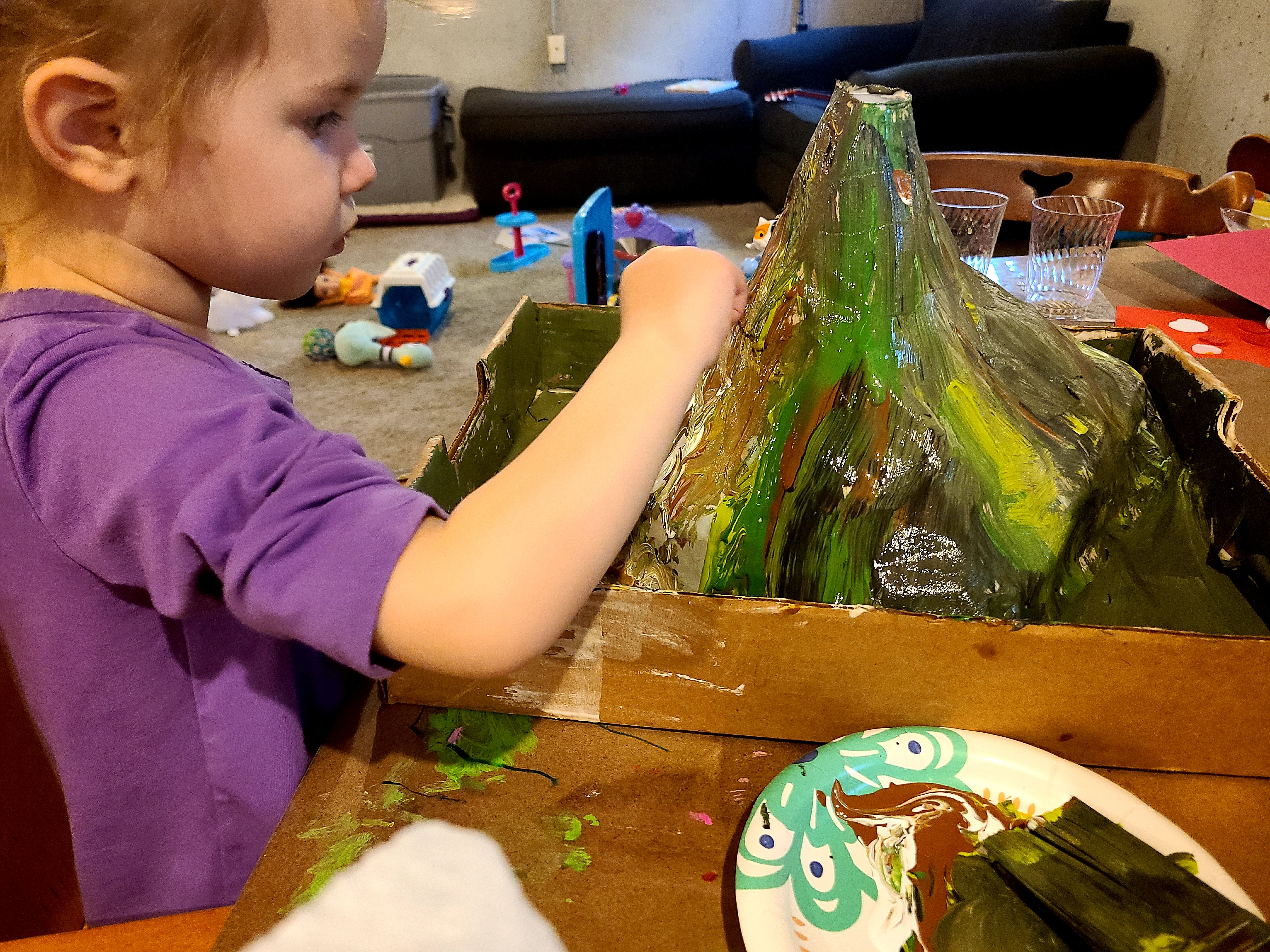
Sensory activities included:
- Touch: ripping paper, crumbling paper, paste and paper texture, paint
- Smell: vinegar, paste, paint
- Sound: crumbling paper, fizzing of reaction
- Sight: color, explosion
Science activities included:
- Texture transformation: making paper Mache
- Chemical reaction: pouring vinegar into soap and baking soda
- Observations: paper transforming from dry to wet and sticky to hardened, explosion’s reaction
#4 Cooking:
Cooking with your child is often seen as a hassle by most parents. However, the educational benefits of cooking for a child are incredible!
Sensory activities included:
- Touch: different textures or food/food products
- Taste: different taste sensations: sour, sweet, bitter, salty, umami
- Sound: pots and pans, ovens, microwave, mixers, blenders, food processors, etc…
- Smell: unique scents of various food items
- Sight: colors, patterns, textures
- Movement: fine motor when mixing, measuring, etc…
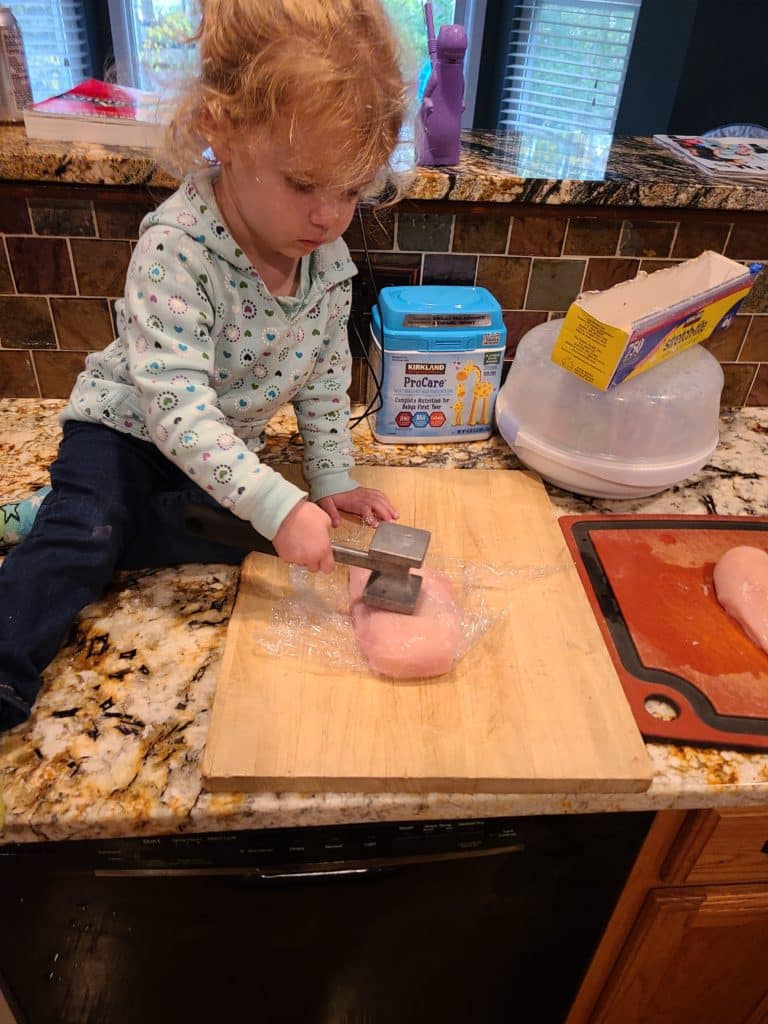
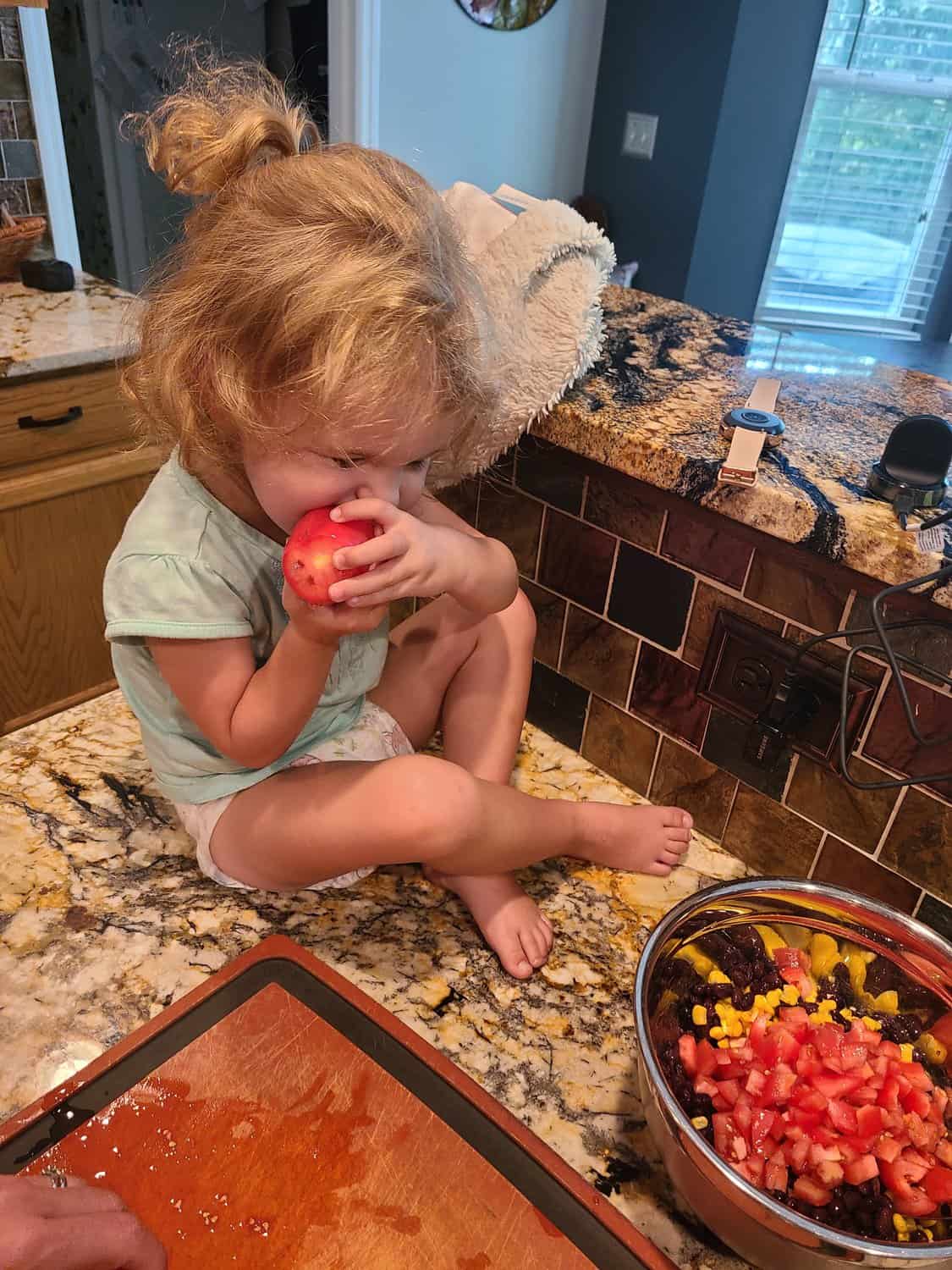
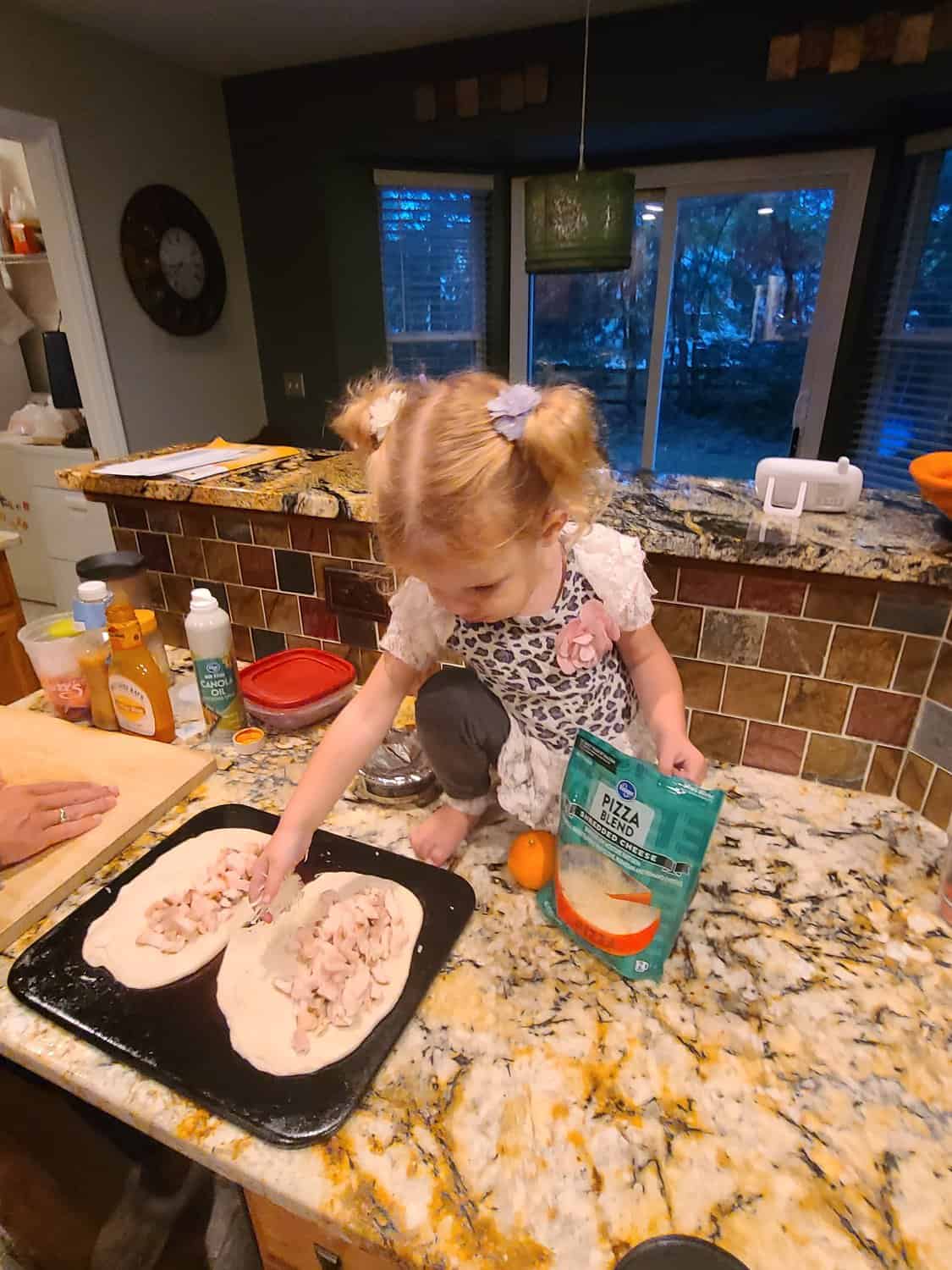
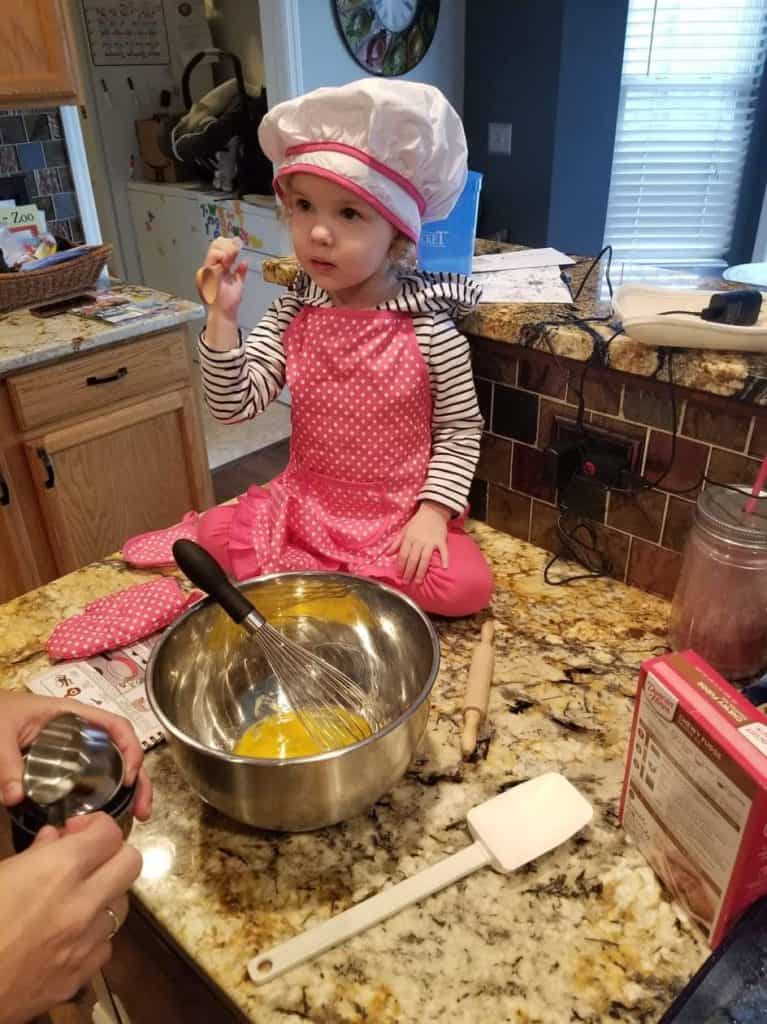
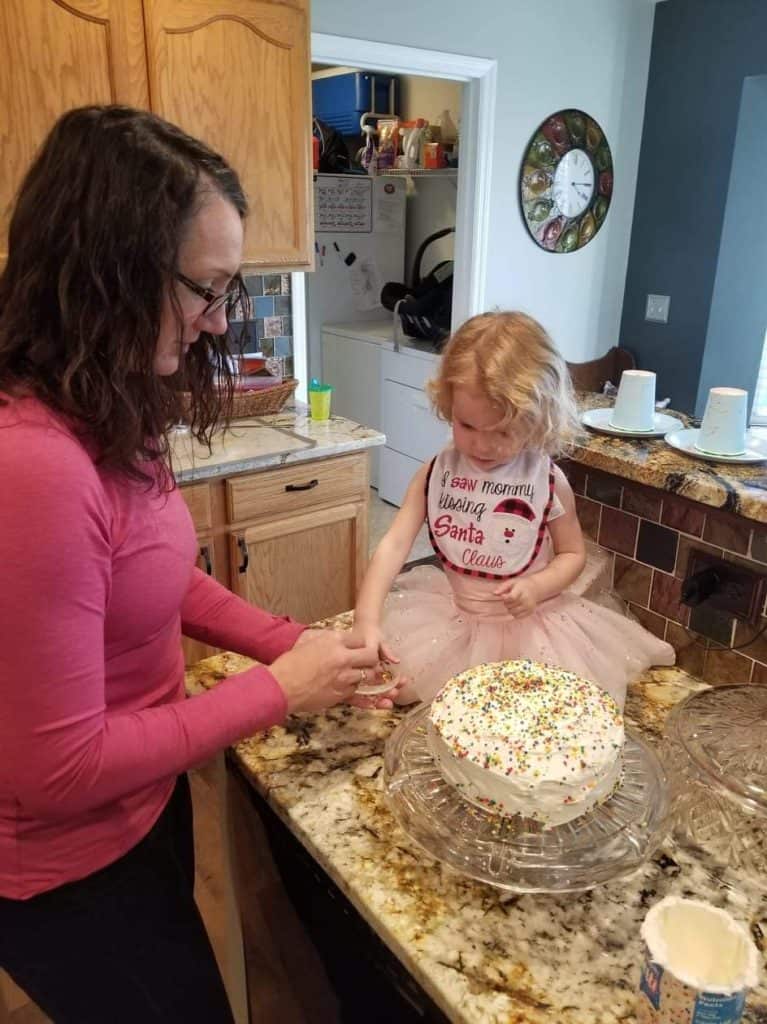
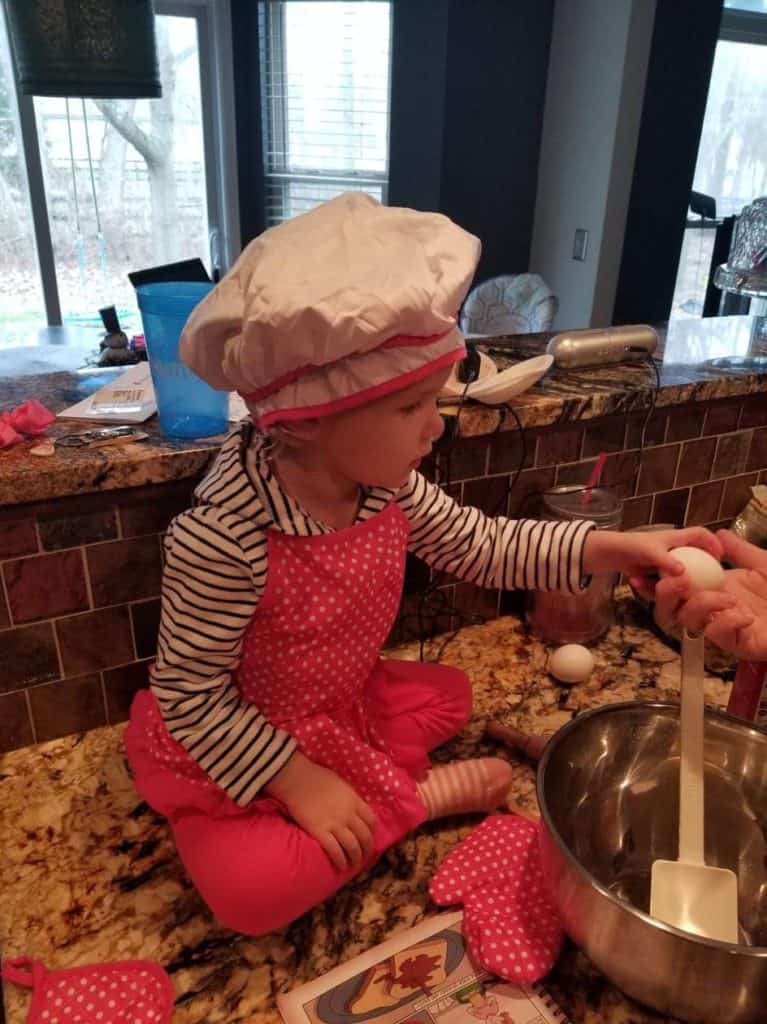
Science activities included:
- Chemical reactions of baking
- Physical reactions of cooking
- Experimenting with different flavor profiles/combinations
- Observing changes, reactions, processes
Read more about the benefits of cooking with your child HERE.
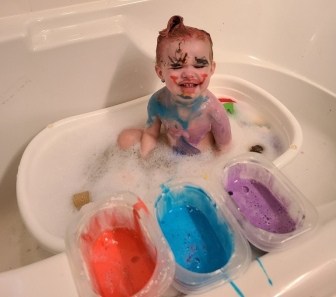
#5 Painting:
- Finger painting: Allowing your child to use their fingers while painting gives them more sensory information to process. They are being stimulated through sight and touch and making observations of color/pattern change.
- Body/face painting: Taking finger painting one step further and allowing you/your child child to paint their body parts/face. This enhances the sensory information as they feel the paint on more sensitive skin (face/arm/leg) than only on hands.
- Bath paints: To make homemade bath paints all you need is: Kid Soap , Cornstarch and Food Dye! Just mix the soap and cornstarch in a 2:1 ratio and then add a drop of color and stir! Then hand your child a paint brush (I give my daughter the sponge brushes , they seem to work better) and let them go to town painting the walls/ body painting themselves! They are getting all of the sensory activity of finger/body painting and the observation aspect of color combination too. But, they are also getting to use math skills and measure as well as observe the transformation from white cornstarch and soap to a colorful paint/paste!
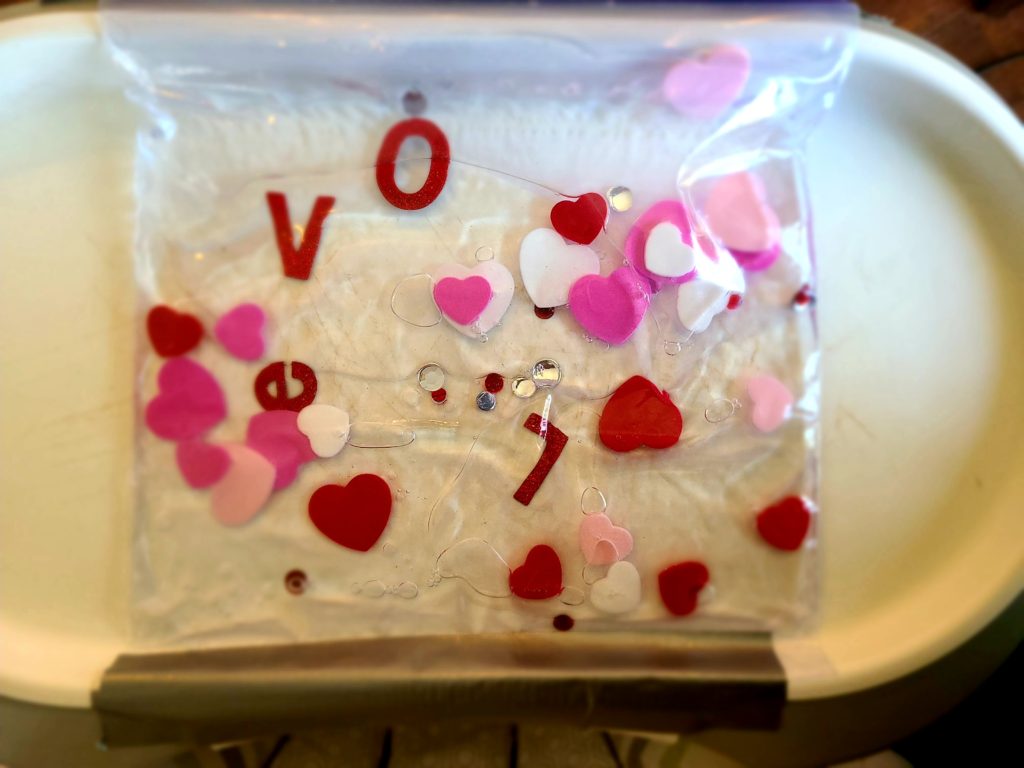
#6 Sensory Bag:
You can put just about anything into a sensory bag! These are fun and easy sensory science activities to do anytime with anything! For ideas as to what to put in your sensory bag check out these 48 Quick Sensory Bag Ideas!
Sensory activities included:
- Touch: moving objects/oil/water around inside the bag.
- Sight: colors, patterns, textures (i.e. bubbles)
- Movement: fine motor skills moving items around
Science activities included:
- Oil and water separation.
- Observation.
- Experimentation with different objects/mediums.
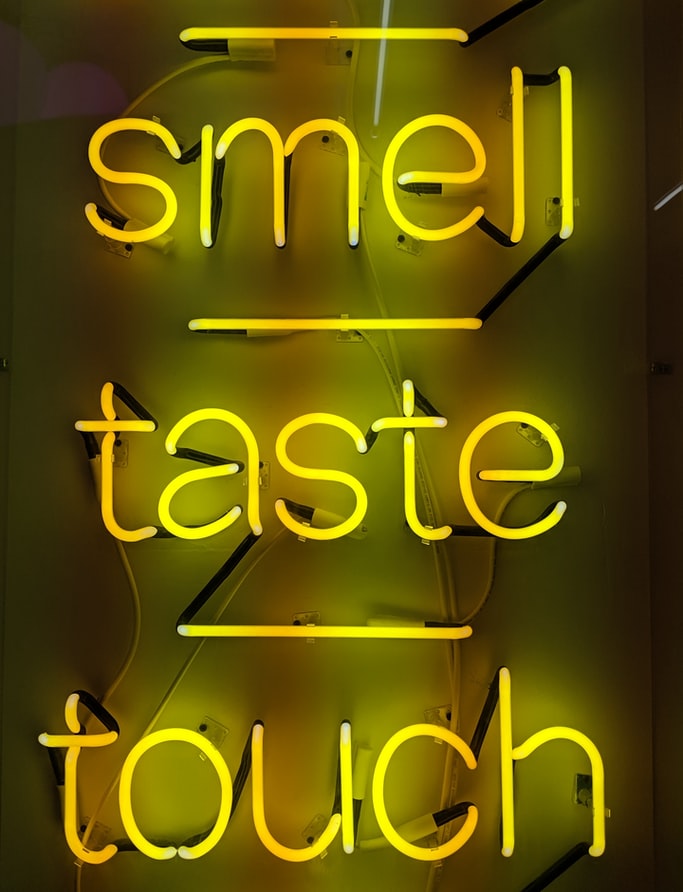
Name the object (smell/taste/feel/sound only):
What you need:
- Any object that either has a scent, a taste, makes a sound, or you can touch.
- Blindfold (optional)
- Noise canceling headphones (optional)
- Nose clip (optional)
How to play:
- Choose a few objects.
- Somehow have child close off all senses except for the one you want them to use.
- Have child use that sense to guess what the object is.
Sensory activities included:
- Touch: when you want them to only feel to identify.
- Smell: when you want them to use scent to identify.
- Taste: when you have them eat/drink it to identify.
- Sound: when you have them listen to it to identify.
Science activities included:
- Observation: using senses to gather information as to what it may be.
- Hypothesizing: using knowledge/experiences combined with observations to guess what it is.
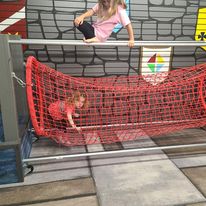
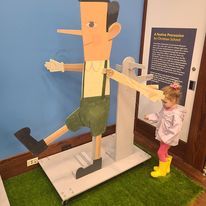
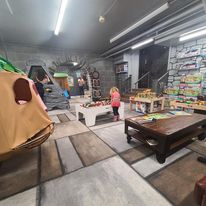
#7 Field Trips:
Sometimes on rainy days you still want to leave the house! Here are a list of places that you can take your child that will provide sensory science activities for them as well:
- Museums (art, history, children’s, science, etc…)
- Indoor playgrounds
- Library programs/events
- Indoor waterparks
- Planetariums
- Conservatories
- Aquariums
- Open gyms (tumbling, trampoline parks, rec centers)
- Classes (painting/cooking/etc…)
I hope that you and your kiddo(s) enjoy these sensory science activity ideas as much as my girls do! They definitely make our rainy days WAY more FUN!!
Cheers!








21 Comments
Star Traci
As a mom, I did some of these but I wish I had known more of the importance of sensory activities, especially that I now know my daughter’s special needs. She wasn’t diagnosed as ADHD until second grade and when she began OT, we learned that sensory activity was so helpful to her and her anxiety, as well, as the educational value.
Danielle Ridgway
I love all of these. Mila and I will have to try some out!
Ashley T
My daughter loves playing with sensory bins and these look like so much fun.
Marysa
My kids always loved sensory activities. I like these ideas.. great way to keep kids busy!
Angel Choi
What an informative and detailed post on sensory play! People need to recognize that if kids’ senses aren’t being explored when they’re little, problems will creep up later in life.